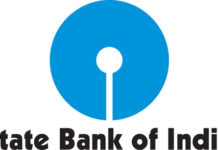Types of Payment Card – Plastic money –
It is money in the form of payment card, issued by an organization to its user. Different types of payment cards issued by banks are, Debit Card, Credit Card, ATM Card, Visa Card, Master Card etc. Plastic money is the easier way of paying for goods and services. It provides convenient usage along with incentives. It is an alternative to hire – purchase or loan on consumer goods.
Statistics for transaction by some Types of Payment Card :-
India had 30.86 M credit cards, 880.03 M debit cards in the year May 2016 to May 2017.
Types of Payment Card –
A. Types of Payment Card – Credit Cards:-
Credit Cards are the pre-approved credit which can be used for the purchase of items now and payment of them later. It is one of the most divisive products among all the financial tools available.
It is a plastic card having a magnetic strip, issued by a bank or business authorizing the holder to buy goods or services on credit. They are also called charge cards.
It is a payment card issued to users as a system of payment. It allows the cardholder to pay for goods and services based on the holder’s promise to pay for them.
History of Credit Cards:-
- Invented in 1887 by Edward Bellamy
- 1st Credit Card – 1920s in US
- In 1966 – 1st Non – US Credit Card was issued by Barclays’ Bank in the UK
Credit Card number structuring:-
- 1st 6 Nos. – Bank of Credit Card
- Next 9 Nos. – Individual Account Number
- Final Digit – Validity Check Code
- Extra Codes – Will be Issue and Security codes
Eligibility for getting the card:-
- Person should have a savings current account in the bank
- His assets and liabilities on a particular date are reported to bank
- A statement of annual or monthly income
- He is considered credit worthy up to certain limit depending upon his income, assets and expenditure
Particulars displayed on credit card:-
Front Side:-
- Issuing Bank logo
- EMV Chip on “Smart Cards”
- Hologram
- Credit card number
- Card brand logo
- Expiration date
- Cardholder name
- Contactless chip
Back Side:-
- Magnetic stripe
- Signature strip
- Card security code
Types of Credit Cards:-
Transaction and parties involved:-
- Cardholder
- Card – issuing Bank
- Merchant
- Acquiring Bank
- Credit Card Association
- Transaction Network
- Affinity Partner
- Insurance Providers
Process:
Few important points:-
- Customer can withdraw money beyond the amount of money present his bank account. However, there is a credit limit for the cardholder up to which the extra money can be withdrawn.
- Also, the withdraw money will have to be paid back as dues along with interest charges as applied by the issuer of card within a time limit.
- It issued by banks / other entities approved by RBI.
- These cards are used to purchase goods and service at E-commerce (online purchase)/ Point of Sale (POS) through recurring transaction/ Interactive Voice Response (IVR) or Mail Order Telephone Order (MOTO).
- It can also be used internationally (if enabled forthis).
- These cards are can be used to withdraw money from ATM and for transferring money to bank accounts, credit cards, debit cards, prepaid cards within the country.
Advantages:-
- Flexible spending limit
- Withdrawal of cash is available
- Wider acceptance and recognition
- Greater security measures
- Allows cash back and bonus points
Disadvantages:-
- Hidden costs
- A debt trap for cardholder
- A debt trap for the cardholder
- Cases of fraud are extremely common today
- Credit cards can be used at ATM cards, but considerable processing fee required
B. Types of Payment Card – Debit Cards:-
- It can be called an electronic check, as the funds are withdrawn directly from either the bank account. It is also known as Bank card or Check Card.
- It can be used to withdraw cash up to the customer’s bank account’s limit. Therefore, debit cards are linked to bank accounts and issued by banks.
- You should have enough balance.
- It can be used for withdrawing cash from an ATM, purchase of goods and services at Point of Sale (POS)/ E-commerce (online purchase) both domestically and internationally.
- It is also used for domestic fund transfer from one person to another.
Few important features of Debit Cards:-
- It is used instead of a check to make purchases, anywhere Visa is accepted
- It is used instead of a credit card to pay bills such as utilities, insurance and car payments
- Point-of-sale funds are drawn from primary checking account
- PIN-system security
- Change your PIN at any Merchants Bank branch
- No annual fee
- Choose from three card designs
Types of Debit Card:-
- Online Debit Card: They require electronic authorization of every transaction. The debits are reflected in the user’s account immediately. The transaction may be additionally secured with the personal identification number (PIN) authentication system.
- Offline Debit Card: They are are used at the point of sale like a credit card. This type of debit card may be subject to a limit, to the current/checking account balance. Transactions 2–3 days to be reflected on users’ account balances
- Prepaid Debit Card: Prepaid debit cards, also called re-loadable debit cards or re-loadable prepaid cards, are often used for recurring payments. The payer loads funds to the cardholder’s card account.
- Electronic Purchase Card: Smart-card-based electronic purse systems (in which value is stored on the card chip, not in an externally recorded account, so that machines accepting the card need no network connectivity) were tried throughout Europe from the mid-1990s, most notably in Germany.
- Cards for mails, telephone and internet use only: Special pre-paid Visa cards for Mail Order/Telephone Order (MOTO) and Internet use only are made available by a small number of banks. They are sometimes called “virtual Visa cards”, although they usually do exist in the form of plastic.
Model of Debit Card:-
Advantages:-
- A consumer who is not credit worthy and may find it difficult or impossible to obtain a credit card can more easily obtain a debit card.
- Use of a debit card is limited to the existing funds in the account to which it is linked.
- For most transactions, a check card can be used to avoid check writing altogether.
- Like credit cards, debit cards are accepted by merchants with less identification.
- Unlike a credit card, which charges higher fees and interest rates when a cash advance is obtained, a debit card may be used to obtain cash from an ATM or a PIN-based transaction at no extra charge, other than a foreign ATM fee.
Disadvantages:-
- Some banks are now charging over-limit fees or non-sufficient funds fees based upon pre-authorizations.
- Many merchants mistakenly believe that amounts owed can be “taken” from a customer’s account after a debit card (or number) has been presented.
- In some countries debit cards offer lower levels of security protection than credit cards.
Difference between Debit Card and Credit Card:
| Debit Card | Credit Card |
| On purchase, money is deducted from bank account. |
On purchase, issuer puts money toward the transaction as loan and you have to pay back within time limit. |
| Application process is easy. | Application process is difficult, depending on your credit score and other details. |
| Debit card linked to bank account when issued by bank. |
Credit card also linked to bank account. |
| Debit card only issued by bank. | Credit card can be issued by bank/ other entities approved by RBI. |
| Can store any amount (i.e. present in bank account.) |
Can store any amount (amount present in bank account + extra amount permitted to drawn). |
| Can be used at ATMs. | Can be used at ATM to withdraw cash. |
| One cannot withdraw extra money than available in his account in debit card. |
If one withdraws extra amount one has to pay back the amount with the rate of interest. |
| Debit Card payments invite no interest charges |
Credit card loans have one of the highest interest rates. |
| There is no monthly bill to be paid on debit cards. |
Monthly bills need to be paid by the customer. Late payments are charged a high interest. |
C. Types of Payment Card – Prepaid Cards:-
- It is issued by banks/non-bank entities.
- For issuing a prepaid card, one has to pay the amount in advance for using the money whenever required. Therefore, this type of card is never linked to any bank account.
- The prepaid cards issued by banks can be used to withdraw money from ATM, purchase of goods and services at E-commerce (online purchase)/ Point of Sale (POS) and for domestic fund transfer from one person to another. This one is known as open system prepaid cards.
- When it issued by authorized non-bank entities for the same usage it is known as semi-closed system prepaid cards.
- It can be used only domestically.
- One can store maximum Rs. 50,000/- at any point of time.
- One can withdraw up to the amount present in the card and is never linked to account
- Application process is easy. Once you load your card with funds, you can start using it.
D. Types of Payment Card – ATM Cards:-
- ATM card is a payment card which is issued by the bank that provides service to the client to access it and withdraw money when needed.
- ATM card is a plastic card issued made by the bank includes the essential information about the bank account of the account holder.
- ATM card is generally used to withdraw money anytime along with it one can also deposit money into their bank accounts using ATM cards
- ATM card facilitates the general purposes of withdrawals, balance inquiry by statement facility and by depositing money through it.
- It is secure because when the transaction happens in an account, banks will send an alert message. So, one can crosscheck the transaction.
E. Types of Payment Card – Visa Cards:-
- Visa card is a payment network company which transfers the fund electronically all over the Globe.
- It is the first multinational financial service provider company in California, the USA in 1958.
- It also provides many financial services like a credit card, debit card and prepaid card to clients.
- It collaborates with the financial institutions like banks to cater the services under their company name.
- The interest charges, transaction fees are decided by the bank or financial institutions, not by the network company.
- The payment technology network charges some percentage to the issuing company. And this is the source of income for them.
F. Types of Payment Card – Master Cards:
- The master card company is located in New York, USA since 1966.
- This company is earlier known as Interbank or Master charge.
- It is a multinational payment technology network company which provides financial services to the customers.
- It is processing payment company.
- It also provides the services like a debit card, prepaid card, charge card, under their company name.
- The company doesn’t directly interact with the customers; it collaborates with the banks and financial institutions to serve the benefits.
















